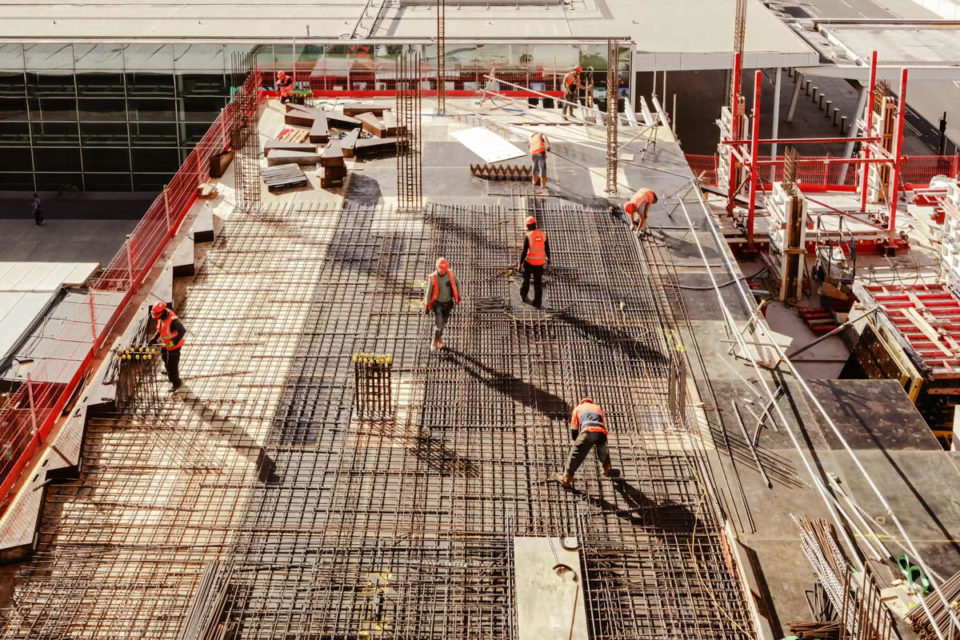Many US Construction Contractors are Turning Down Work Because They Don’t Have Enough Workers

Story by Thaddeus Swanek, Strategic Communications, U.S. Chamber of Commerce
Even before the pandemic, commercial contractors had serious concerns about having enough skilled workers to fill open positions. According to the latest data from the U.S. Chamber’s Commercial Construction Index (Index), those concerns remain at chronically high levels and are leading to serious consequences.
Skilled worker shortage leads to contractors turning down projects Commercial contractors concerns about having enough skilled workers to fill open positions remained at chronically high levels this quarter and are leading to serious consequences.
The vast majority (91%) of contractors report moderate to high levels of difficulty finding skilled labor, up three points from this summer. More telling is the fact that 62% of contractors report high levels of difficulty finding skilled workers, rising seven points from last quarter, and up 20 points from one year ago.
These challenges are leading to real-world consequences: almost half (45%) of contractors who report difficulty finding workers say they have turned down work because they can’t find enough skilled workers.
Other consequence of the skilled workers shortage are even worse. Among those contractors reporting difficulty finding workers:
- 74% say they are asking skilled workers to do more work (down from 83% who said the same in 2020 Q4).
- 72% report a challenge in meeting project schedule requirements (up slightly from 71% in 2020 Q4).
- Over half (60%) are putting in higher bids for projects (up from 58% in 2020 Q4).
“One of the most pressing issues facing our economy today is the worsening worker shortage crisis, and these findings show that construction sector, much like other industries, continues to face this challenge,” said U.S. Chamber of Commerce Executive Vice President and Chief Policy Officer Neil Bradley.
The report also found that rising costs and a lack of materials continue to create challenges for the construction industry, causing the overall Index score to fall one point this quarter to 65 as contractors’ revenue expectations, a key driver of the score, fell for the first time since the start of the pandemic.
Record high number of contractors report materials shortages Alongside a shortage of workers, contractors are also facing shortages in the materials they need to complete projects.
A record-high percentage (95%) of contractors are experiencing at least one product shortage, up 24 points year-over-year. Steel (27%) remained the most-reported product shortage followed by roofing material (19%) and wood/lumber (17%).
Steel has climbed to the most-cited material shortage over the past several quarters—and many contractors also cite steel as a concern because of its fluctuating cost. Nearly an all-time high of 97% of contractors (since the start of the Index in 2017) indicated that cost fluctuations have a moderate-to-high impact on their business. Of those who said material cost fluctuations have had an impact on their business, 43% said steel was their top concern.
Trade and tariffs remain a big concern
Contractors have expressed ongoing concerns about the potential effect of tariffs and trade wars on their access to materials. This quarter, already-high concerns over trade and tariffs persisted.
Nearly half (47%) of contractors said steel and aluminum tariffs will have a high to very-high degree of impact on their business in the next three years. A similar percentage (49%) said the same about new construction material and equipment tariffs, up five points from last quarter and up 23 points year-over-year.
Bradley said, “It is critical that policymakers invest in programs to upskill and prioritize workers, pass sensible immigration reform, and remove tariffs and other trade barriers so that contractors have the workers and materials they need to get the job done.”
For more data on the commercial construction industry, visit www.CommercialConstructionIndex.com to access the full report and methodology.


